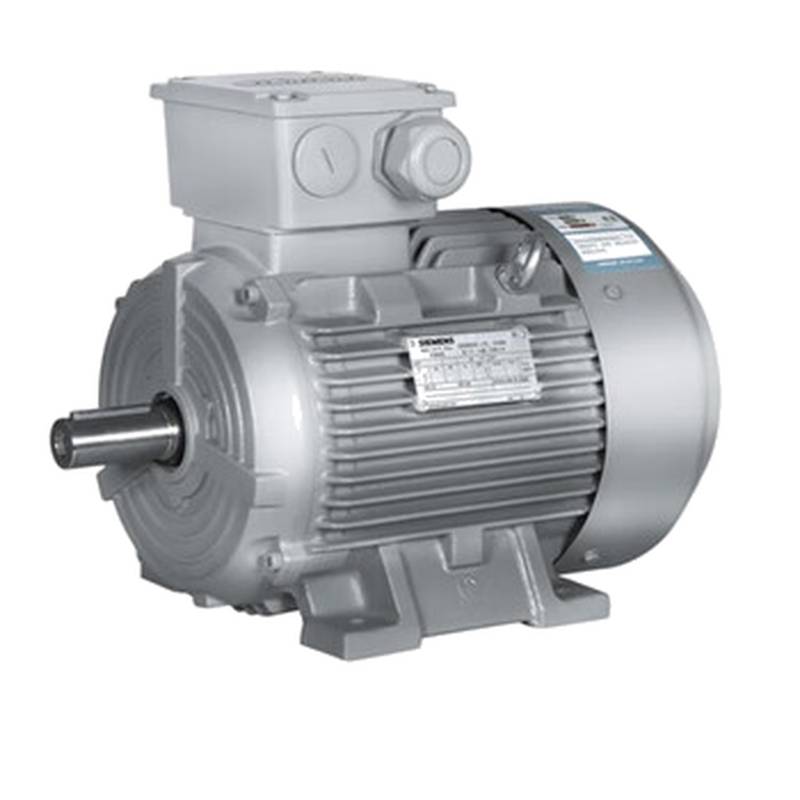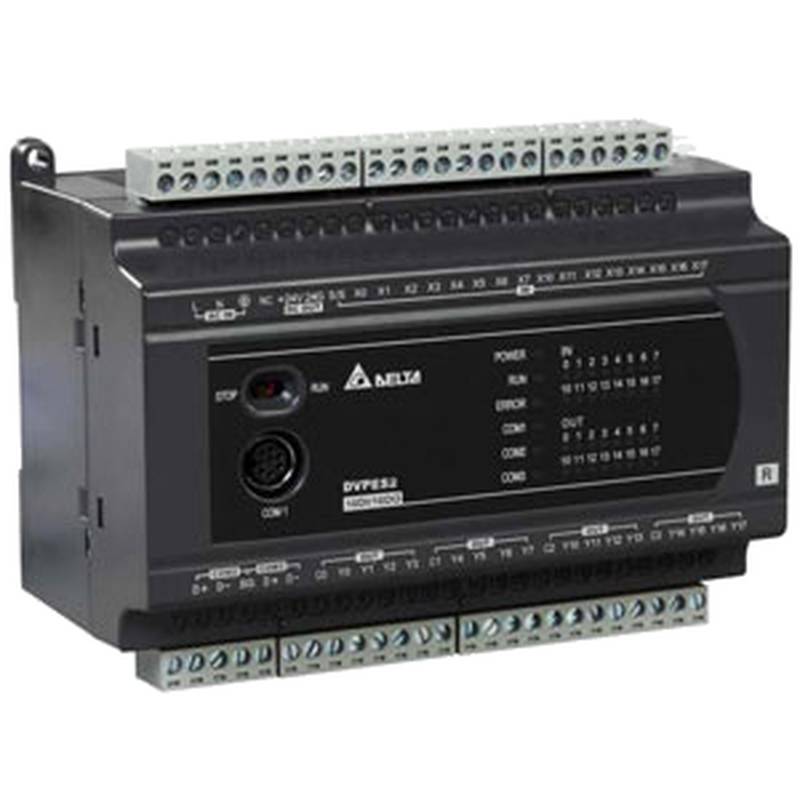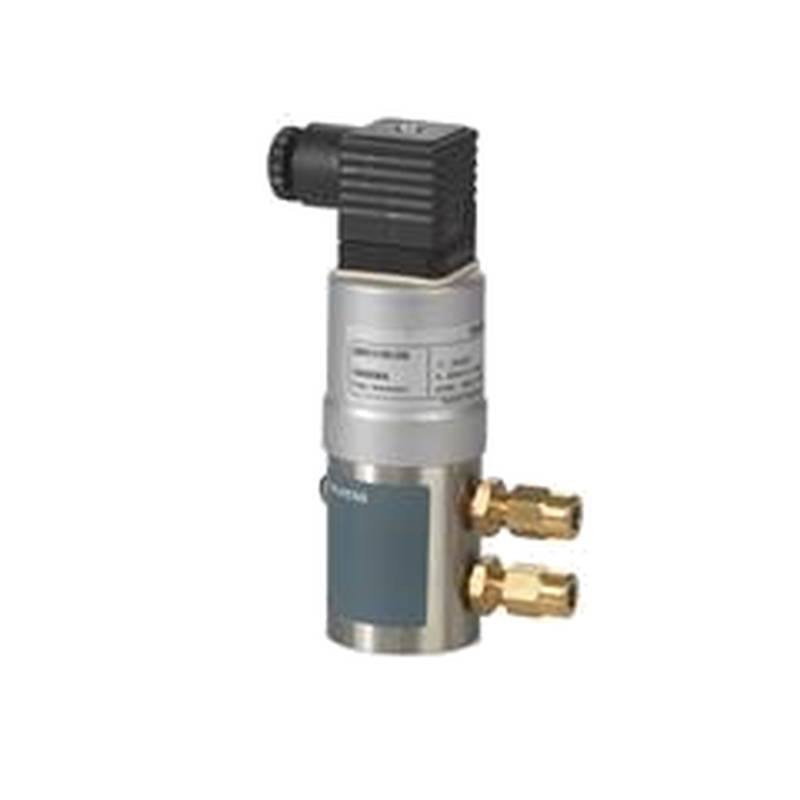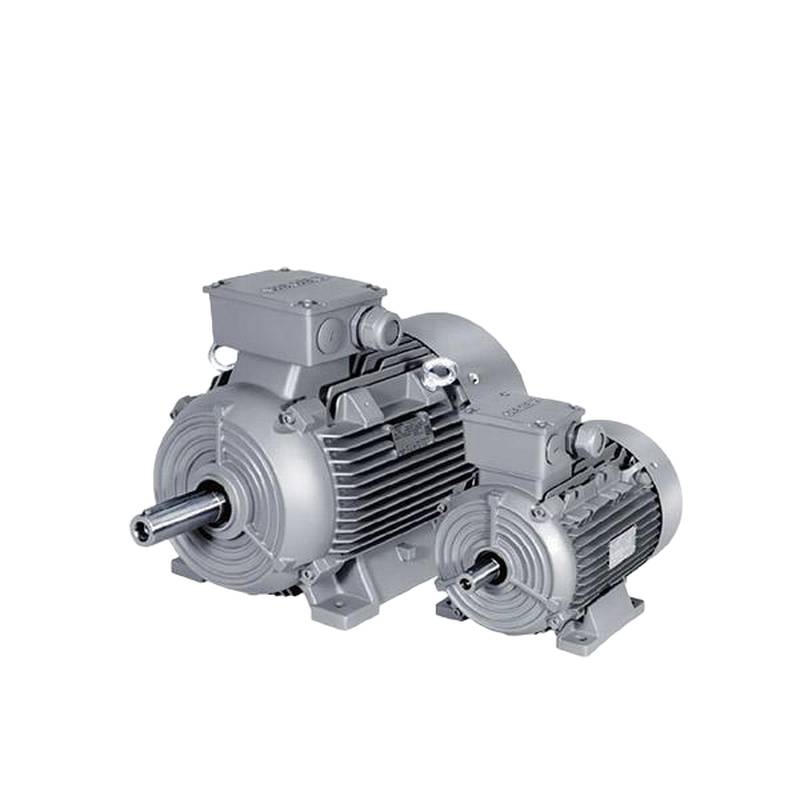
The Delta DVP04AD-E2 is a robust 4-channel analog signal acquisition input module designed to bridge the gap between real-world analog sensors and digital PLC control systems. This module excels in converting analog voltage or current signals into high-resolution 14-bit digital values, enabling precise data processing and control within Delta's DVP-ES2/EX2 series PLCs and compatible platforms. With its fast response time of 3 ms across all channels, significant noise immunity, and user-selectable voltage or current input ranges (±10V or ±20mA), the DVP04AD-E2 offers reliable and accurate performance in demanding industrial environments.
Product Specifications
| Specification | Value |
| :---------------------- | :------------------------------------------------------------------- |
| Analog Input Channels | 4 |
| Input Signal Types | Voltage: ±10V (or 0-10V, 0-5V); Current: ±20mA (or 0-20mA, 4-20mA) |
| Resolution | 14-bit (±32,000 digital value) |
| Conversion Time | 3 ms (across all channels) / 400μs per channel |
| Overall Accuracy | ±0.5% FSR at 25°C; ±1% FSR from 0-55°C |
| Power Supply | 24 VDC (20.4 VDC to 28.8 VDC) |
| Power Consumption | 1W (external power) / 30VA |
| Noise Immunity | ESD: 8 kV, EFT: 2 kV, RS: 26 MHz~1GHz, 10V/m |
| Operating Temperature | 0°C to 55°C |
| Storage Temperature | -25°C to 70°C |
| Dimensions | Standard DIN rail mounting |
| Compatibility | DVP-ES3/ES3-TEC/EX3/ES2/EX2 Series PLCs |
Core Features & Market Positioning
The Delta DVP04AD-E2 stands out in the competitive industrial automation market due to its blend of precision, reliability, and seamless integration capabilities. It positions itself as a high-value analog input expansion module for Delta's widely adopted DVP PLC series. Key differentiators include its robust noise immunity, vital for stable operation in electrically noisy industrial settings. The dual input capability (voltage/current) selectable via wiring simplifies sensor integration and reduces the need for specialized signal conditioners. Furthermore, its 14-bit resolution provides a high level of detail in analog signal acquisition, crucial for applications requiring fine control and monitoring. Delta's reputation for producing reliable and advanced engineering products further bolsters the DVP04AD-E2's market appeal.
Key Application Scenarios
The versatility of the Delta DVP04AD-E2 makes it suitable for a broad spectrum of industrial applications where precise analog signal measurement is paramount. Common use cases include:
Process Control: Monitoring and controlling variables like temperature, pressure, flow rate, and level in chemical plants, water treatment facilities, and manufacturing processes. Machine Automation: Acquiring feedback from sensors on machinery for speed regulation, position sensing, and torque monitoring in automated assembly lines and robotic systems. Environmental Monitoring: Gathering data from sensors for ambient conditions, emissions monitoring, and building automation systems. Material Handling: Precisely controlling conveyor speeds, load cells for weighing applications, and fill levels in packaging machinery.
Practical System Integration Guidance
Integrating the DVP04AD-E2 into a Delta PLC system is straightforward. The module connects directly to the PLC's MPU (Main Processing Unit) and extends its I/O capacity without consuming digital I/O points. Wiring for analog inputs is critical: users select between voltage and current input by configuring the terminal connections, ensuring the correct signal is applied to the appropriate terminals (V+, I+, COM). For current input, it's essential to short-circuit the "V+" and "I+" terminals. Data acquisition is managed through FROM/TO instructions or by reading special register addresses (D9900-D9999) within the PLC program. Advanced users can fine-tune signal conversion by adjusting offset and gain values through control registers (CR) for custom calibration.
Wiring Example (Conceptual for Voltage Input): Connect the analog sensor's positive output to the module's "V+" terminal. Connect the analog sensor's common or ground to the module's "COM" terminal. Ensure proper grounding of the module and system to prevent electromagnetic interference.
Operation and Risk Mitigation
Operating the Delta DVP04AD-E2 requires adherence to safety protocols. The module is an "OPEN-TYPE" device and must be installed within an enclosure to protect against dust, humidity, and physical shock. It is imperative to never connect AC power to any I/O terminals, as this will cause severe damage. Always verify all wiring before applying power. After disconnecting power, avoid touching terminals for at least one minute due to residual charge. Effective grounding of the module is essential for mitigating electromagnetic interference and ensuring signal integrity. In cases of significant signal ripples causing noise, connecting a 0.1-0.47µF capacitor can improve performance.
Scalability & Long-Term Value
The DVP04AD-E2 enhances the scalability of Delta PLC systems by allowing engineers to easily expand analog input capabilities. As part of the DVP-ES2/EX2 series ecosystem, it offers excellent compatibility with other Delta automation components, including VFDs, servo drives, and HMIs, facilitating comprehensive system integration. This compatibility ensures that projects can grow and adapt to evolving automation needs without requiring a complete system overhaul. Integration with IIoT platforms is achieved through the PLC's communication capabilities, allowing the analog data collected by the DVP04AD-E2 to be transmitted for remote monitoring, data analytics, and predictive maintenance strategies.
---
Frequently Asked Questions (FAQs)
Q1: What voltage and current input ranges does the Delta DVP04AD-E2 support?
The Delta DVP04AD-E2 module supports multiple analog input ranges, configurable via wiring. For voltage inputs, it accommodates ±10V, 0-10V, or 0-5V signals. For current inputs, it handles ±20mA, 0-20mA, or 4-20mA signals.
This flexibility allows for integration with a wide array of industrial sensors, including thermocouples, RTDs, pressure transmitters, and flow meters. Ensuring correct wiring according to the chosen input type is crucial for accurate signal acquisition.
The module converts these analog signals into a 14-bit digital value, offering a resolution of ±32,000. This detailed conversion is vital for applications requiring precise control and monitoring.
Q2: How is the Delta DVP04AD-E2 configured for voltage or current input?
Configuration is achieved by modifying the external wiring connections to the module's input terminals. Specific terminals are designated for voltage (V+) and current (I+) inputs, alongside a common (COM) terminal.
For current inputs, it is standard practice to short-circuit the V+ and I+ terminals together. This ensures the module correctly interprets the current signal.
Always refer to the DVP04AD-E2 instruction manual for detailed wiring diagrams specific to each input type to prevent incorrect connections and potential damage.
Q3: What is the resolution and conversion speed of the DVP04AD-E2?
The DVP04AD-E2 boasts a high 14-bit resolution, translating analog signals into digital values up to ±32,000. This granular level of detail is essential for accurate process control and data analysis.
Its conversion speed is remarkably fast, with some sources indicating 400μs per channel and others stating 3 ms across all channels. This rapid conversion ensures near real-time data acquisition for dynamic industrial processes.
The combination of high resolution and quick conversion speed makes the DVP04AD-E2 suitable for applications demanding precise and timely analog signal processing.
Q4: How does the DVP04AD-E2 integrate with Delta DVP PLC series?
The DVP04AD-E2 functions as an expansion module, connecting directly to the MPU (Main Processing Unit) of compatible Delta DVP PLCs, such as the ES2, EX2, ES3, and EX3 series. It expands the PLC's analog input capabilities without occupying dedicated digital I/O points.
Data communication between the PLC and the DVP04AD-E2 is managed using standard PLC programming instructions like FROM/TO, or by accessing specific data registers (D9900-D9999). This allows for straightforward programming of analog data acquisition.
The module is automatically assigned an address (0-7) based on its physical connection distance from the MPU, simplifying system configuration within the PLC's network architecture.
Q5: What are the typical applications for the Delta DVP04AD-E2 analog input module?
This module is widely used in industrial automation for acquiring analog signals from various sensors. Common applications include precise monitoring and control of temperature, pressure, flow, and liquid levels in manufacturing processes.
It is also employed in machine control for speed regulation, position feedback, and monitoring motor torque. This enables sophisticated control loops and performance optimization for automated equipment.
Furthermore, the DVP04AD-E2 finds utility in environmental monitoring systems and building automation, gathering data from sensors to manage energy consumption and operational parameters.
Q6: What are the noise immunity specifications for the DVP04AD-E2?
The Delta DVP04AD-E2 is engineered for robust performance in challenging industrial environments, featuring strong noise immunity. It is protected against Electrostatic Discharge (ESD) up to 8 kV.
It also possesses immunity against Electrical Fast Transients (EFT) up to 2 kV and electromagnetic interference from Radio Frequency (RF) signals up to 10 V/m within the 26 MHz to 1 GHz frequency range.
These specifications ensure reliable data acquisition even in locations with significant electrical noise, such as near high-power machinery or variable frequency drives.
Q7: Can the Delta DVP04AD-E2 handle both voltage and current signals simultaneously?
No, the DVP04AD-E2 is designed for either voltage or current input per channel, but not simultaneously on the same channel. The selection between voltage and current input is made through the physical wiring configuration of the input terminals.
Each of the four input channels can be independently configured for voltage or current, allowing for a mix of sensor types if needed across the module. However, once wired for a specific type, a channel will operate exclusively in that mode.
It is crucial to correctly wire each channel according to the sensor's output signal type to ensure accurate signal conversion and prevent module damage.
Q8: How is the DVP04AD-E2 powered, and what are its power consumption details?
The Delta DVP04AD-E2 is powered by a 24 VDC supply, with an acceptable input range of 20.4 VDC to 28.8 VDC. This standard industrial voltage level ensures compatibility with most common DC power supplies.
The module's maximum rated power consumption is typically around 1W when supplied by an external power source. Some specifications also list a consumption of 30VA. This low power draw makes it an energy-efficient component in automation systems.
The power supply voltage is derived from the MPU, with a limit of 12W, indicating it can also draw power directly from the PLC's main unit when connected.
Q9: What are the temperature operating and storage conditions for the DVP04AD-E2?
The DVP04AD-E2 is designed to operate reliably within an industrial temperature range of 0°C to 55°C. This range covers most standard factory floor environments.
For storage, the module can withstand a broader temperature range, from -25°C to 70°C. This allows for flexibility in warehousing and transportation.
Adhering to these temperature specifications is vital for maintaining the module's performance and ensuring its long-term durability and accuracy in various climates.
Q10: Does the DVP04AD-E2 offer any averaging functions for analog signals?
Yes, the DVP04AD-E2 supports an averaging function for its analog input channels. This feature can be configured using specific control registers (CR#8 to CR#11).
Users can set the sampling range for this averaging function, typically from K1 up to K100. This allows for smoothing out noisy or fluctuating analog signals.
By averaging multiple readings over a defined period, the module provides a more stable and representative analog value, which is beneficial for control loops that are sensitive to signal noise.

























